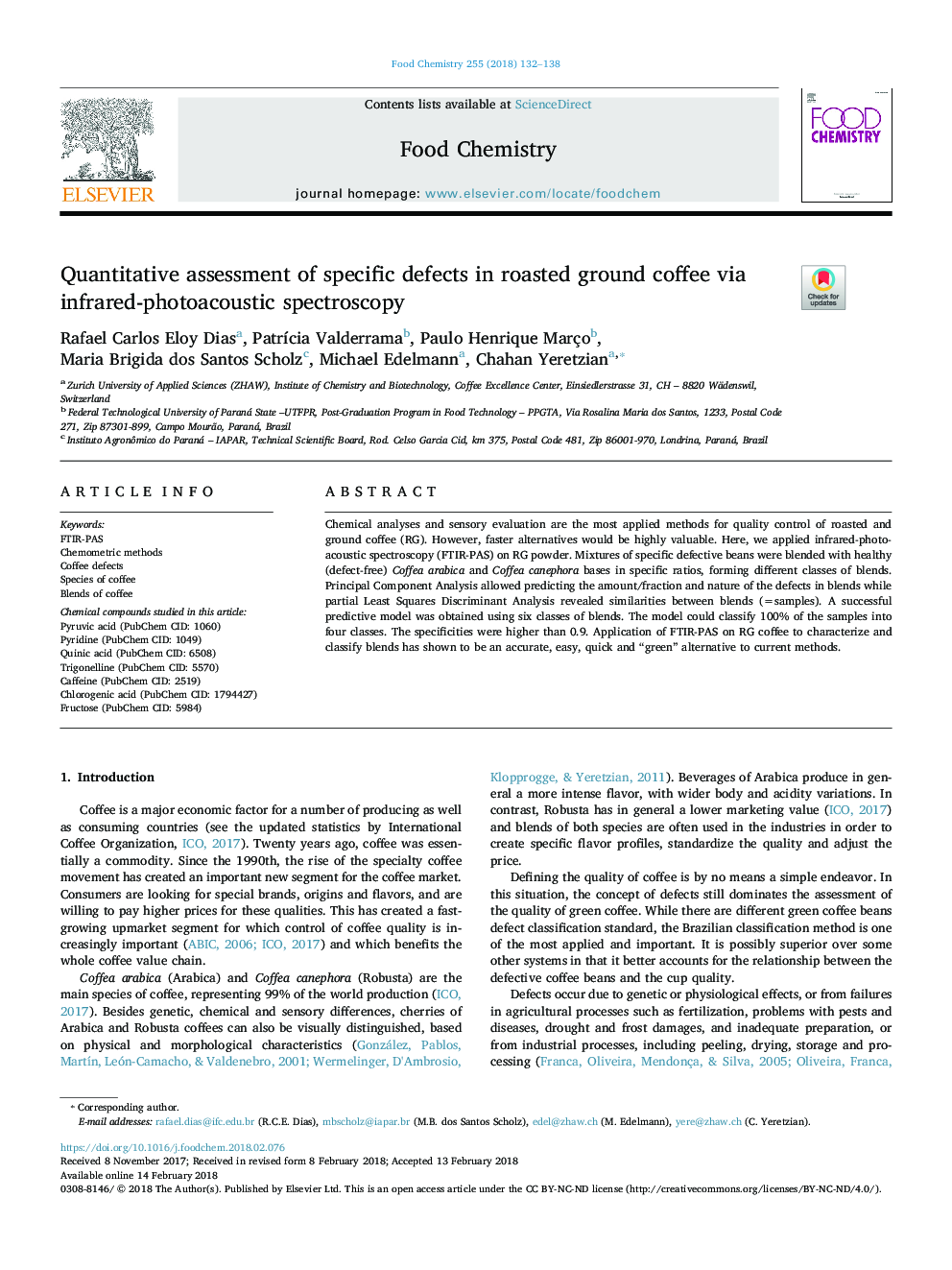| Article ID | Journal | Published Year | Pages | File Type |
|---|---|---|---|---|
| 7585402 | Food Chemistry | 2018 | 7 Pages |
Abstract
Chemical analyses and sensory evaluation are the most applied methods for quality control of roasted and ground coffee (RG). However, faster alternatives would be highly valuable. Here, we applied infrared-photoacoustic spectroscopy (FTIR-PAS) on RG powder. Mixtures of specific defective beans were blended with healthy (defect-free) Coffea arabica and Coffea canephora bases in specific ratios, forming different classes of blends. Principal Component Analysis allowed predicting the amount/fraction and nature of the defects in blends while partial Least Squares Discriminant Analysis revealed similarities between blends (=samples). A successful predictive model was obtained using six classes of blends. The model could classify 100% of the samples into four classes. The specificities were higher than 0.9. Application of FTIR-PAS on RG coffee to characterize and classify blends has shown to be an accurate, easy, quick and “green” alternative to current methods.
Keywords
Related Topics
Physical Sciences and Engineering
Chemistry
Analytical Chemistry
Authors
Rafael Carlos Eloy Dias, PatrÃcia Valderrama, Paulo Henrique Março, Maria Brigida dos Santos Scholz, Michael Edelmann, Chahan Yeretzian,
